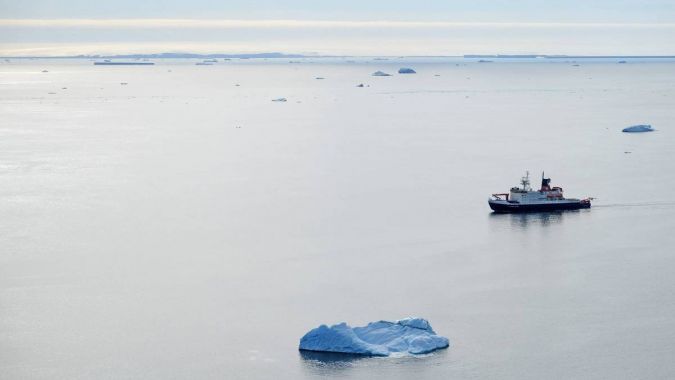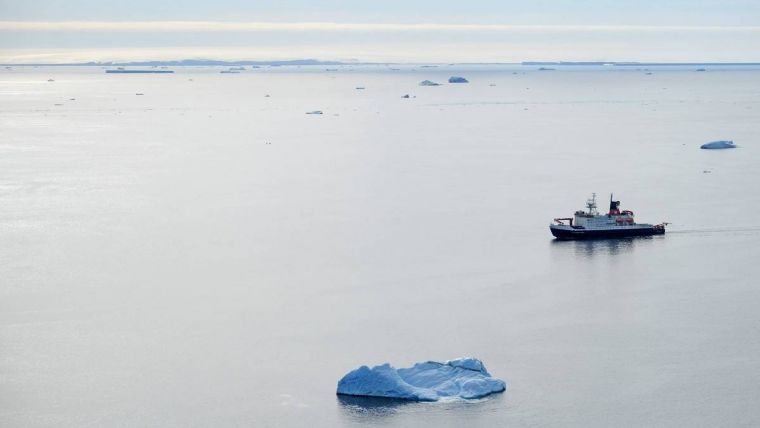Record low: Antarctic sea ice melts to unprecedented levels
The amount of sea ice in the Antarctic has reached a record low, with levels not seen in the past 40 years of satellite observation. On 8 February 2023, only 2.20 million square kilometres of the Southern Ocean were covered with sea ice. January 2023 had already set a new record for its monthly mean extent (3.22 million square kilometres). The melting of sea ice in the Antarctic is most likely to continue into the second half of February. The rapid decline in sea ice over the past six years is quite remarkable, since the ice cover hardly changed in the 35 years before.
The melting has progressed in the Bellingshausen and Amundsen Seas in the West Antarctic. The research vessel Polarstern is currently in the region, exploring the evidence left behind of past glacials and interglacials. Expedition leader and AWI geophysicist Prof. Karsten Gohl, who is now in the region for the seventh time – having first come in 1994 – says that he has never seen such an extreme, ice-free situation before.
The Antarctic sea ice reaches its maximum extent in September or October and its minimum extent in February. In winter, the cold climate throughout the Antarctic promotes the rapid formation of new sea ice. At its maximum, the sea-ice cover in the Antarctic is generally between 18 and 20 million square kilometres.
The geological evolution of the West Antarctic ice sheet
Analyses of the current sea-ice extent show that for the entire month of January 2023, the ice was at its lowest-ever extent recorded for the time of year since the beginning of record keeping in 1979. The Antarctic sea ice shows a declining trend of 2.6% per decade. The current melting of sea ice in the Antarctic is likely due to higher-than-average air temperatures and a positive phase of the Southern Annular Mode. This positive phase intensifies the westerly winds and upwelling of deep water on the continental shelf, leading to sea-ice retreat and melting of ice shelves, contributing to future global sea-level rise.
The ongoing Polarstern expedition aims to uncover the geological evolution of the West Antarctic ice sheet to make more accurate predictions on sea-level rise in the face of climate change. Researchers use both historical records and geophysical and geological methods to investigate past ice-sheet movements and estimate how rapidly the ice sheets will melt. The records of the 125-year-old Belgian research vessel Belgica offer a unique perspective on the ice conditions in the Antarctic at the dawn of the industrial age and serve as a benchmark for comparison with today's climate change.
For more detailed analyses at the Sea Ice Portal, see here.















